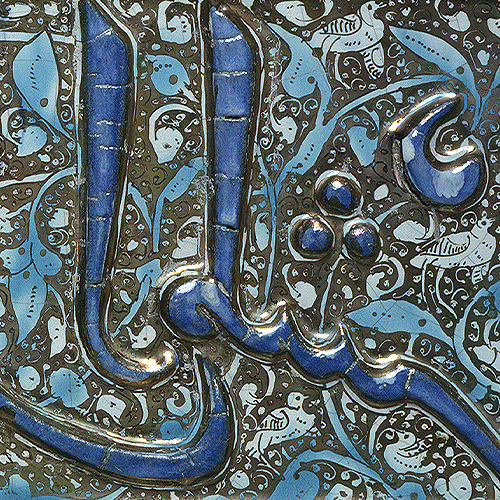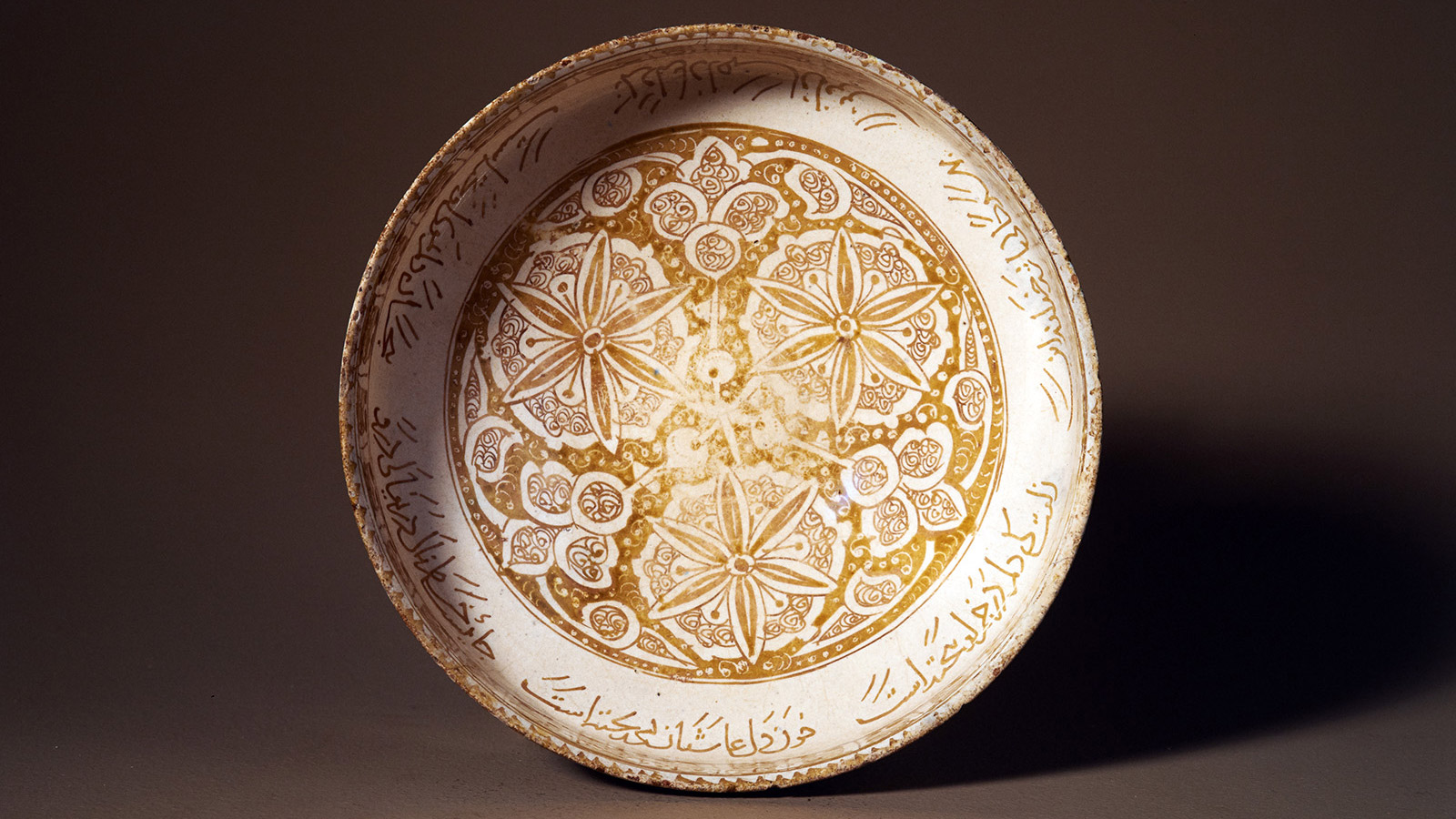
Emotions at Table
From passion to longing
Event Slider
Date
- Closed on Tuesday
Location
Calouste Gulbenkian MuseumFrom at least the eighth century the written word became an important feature of the arts of daily life in the Islamic world. Arabic script was used first to convey the Word of God in Arabic language, and then later, the same script was applied to Persian too. New research into the medieval Iranian ceramics on display has revealed that their inscriptions animated dining and heightened emotions: by praising the host’s generosity, bestowing blessings, and awakening or soothing deep passions of the heart. Interpretations of the romantic poems range from the erotic to Divine Love. In Persian language, the lover and beloved are non-gendered, allowing also for ambiguity between the sexes.
All the cups and bowls with human figures on display share the same formula and bear epigraphy blessings to the owner. One of these bowls is also signed, bringing the artist to the table too, while other vessels have poems by famous poets conferring great literary prestige on their owners.
Bowls with abstract designs carry love poems. While dining, these words could be read aloud by lifting the delicate vessels and turning them clockwise in the light, bringing a moment of ardent drama to the sensory pleasures of sharing fragrant food, wine, music and intimate conversation.
Special thanks to Professor Andrew Peacock, University of St Andrews, Scotland.
